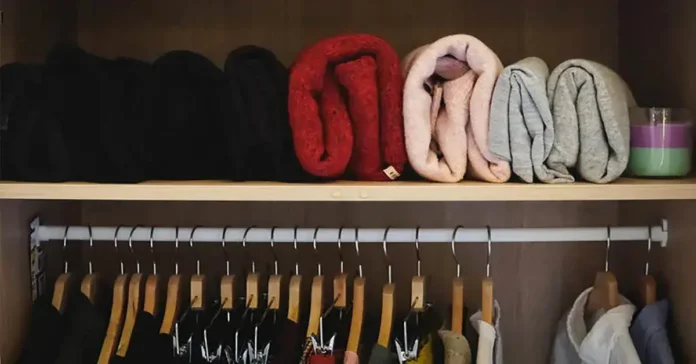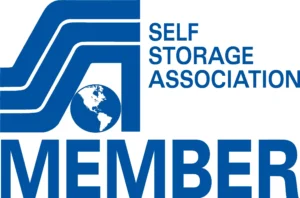Marie Kondo is a world-renowned organizing consultant known for her famous KonMari method, which focuses on tidying up and bringing joy into your life. Her approach revolves around keeping only items that “spark joy” while discarding anything that no longer serves a purpose. The KonMari method encourages a mindful approach to organizing, where every item has a specific place, and the goal is to create a home that reflects your ideal lifestyle. By following these Marie Kondo Organising tips, you’ll transform your home into a clutter-free, peaceful space that helps you feel at ease.
An organized home isn’t just about aesthetics; it also improves your mental well-being. When your home is tidy, you feel calmer, more focused, and less stressed. These tips will also help you maximize your space, making it more functional. If you need additional space, self-storage is an excellent option to keep your home organized without overcrowding it.
1. Start with a Vision
Before you begin decluttering, it’s essential to have a clear vision of what you want your home to look like. Ask yourself what your ideal living space would feel like. Do you prefer a minimalist, open space, or do you want a cozy and warm environment? Visualizing your home’s end goal helps you stay focused throughout the decluttering process.
Imagine how your space will function. Will it have ample storage for frequently used items? Will you need to incorporate self-storage to declutter effectively? These questions will guide your decisions as you organize your home.
2. Declutter by Category, Not by Room
One of the unique aspects of the KonMari method is decluttering by category, not by room. Instead of tackling each room individually, you focus on specific item categories like clothes, books, papers, or kitchen items. This method ensures that you handle all similar items at once, making the decluttering process more efficient.
Start with clothes, as they are easier to sort. Gather every piece of clothing in the house and decide what sparks joy. Once you’ve completed the clothing category, move on to books, papers, and other items. By grouping items together, you get a better sense of what you own and can make more intentional decisions.
If you find items that you don’t use often but still want to keep, consider using self-storage. Self-storage units are perfect for storing seasonal items, extra furniture, or sentimental belongings, freeing up valuable space in your home. This makes it easier to stay organized while keeping your home clutter-free.
3. Does It Spark Joy?
The heart of the KonMari method is to keep only what sparks joy. When decluttering, pick up each item and ask yourself if it truly makes you happy. If it doesn’t, thank it for its service and let it go. This emotional assessment helps you create a space filled with meaningful belongings. It’s essential to focus on what you value rather than what you feel obligated to keep. By following this principle, you’ll reduce unnecessary clutter, and it can make downsizing or organizing easier. If you’re not ready to part with certain items, self-storage options can provide a temporary solution, giving you time to decide.
4. Use the Power of Folding
Marie Kondo’s unique folding technique transforms how you store clothes. By folding items into neat, upright rectangles, you can easily see everything in your drawer at a glance. This method not only maximizes drawer space but also prevents items from becoming wrinkled. Use this technique to organize clothes by type or color, making it easy to find what you need quickly. For seasonal clothing or less-used items, consider placing them in self-storage to free up space in your home. Proper storage solutions keep your living space clutter-free and allow easy access when needed.
5. Designate a Home for Every Item
One of the keys to maintaining an organized home is giving every item a specific place. This ensures you always know where things belong, making it easier to keep the house tidy. Once you’ve organized, create labeled areas for different categories of items—this could be for kitchen utensils, office supplies, or personal belongings. By having a designated home for everything, you avoid the clutter that accumulates from misplaced items. For things you don’t use often but still want to keep, self-storage units are a practical option. They allow you to store belongings without crowding your living space.
6. Marie Kondo Organising Tips – Tidy in One Go
Marie Kondo emphasizes the importance of tidying all at once, rather than in small bursts. By doing a big decluttering session, you create a more significant, lasting impact and prevent clutter from building up again. Tackle your entire space in one go, focusing on each category of items to ensure nothing is left untouched. This process may seem overwhelming, but the results are transformative. Your home will feel more open and organized, providing a sense of accomplishment. If there are items you aren’t ready to part with but don’t need daily, consider using self-storage to keep them safe and out of the way while maintaining your home’s new clutter-free environment.
7. Respect Your Belongings
Marie Kondo emphasizes the importance of respecting your belongings. This mindset not only helps extend the life of your items but also fosters a greater appreciation for the things you own. By treating your possessions with care, you’ll get more use out of them and minimize the need for replacements, which reduces clutter in the long run.
Start by folding and storing items mindfully. For instance, Marie’s vertical folding method is a game-changer, especially for clothes. When you fold shirts, sweaters, and pants vertically, it not only saves space but also makes it easier to see everything at a glance. This prevents items from being buried in drawers and forgotten. Similarly, store delicate items like glassware or electronics in protective containers to ensure they remain in good condition.
Using self-storage for seasonal or rarely used items is another great way to show respect for your belongings. Rather than letting things get damaged or forgotten in overcrowded spaces, consider putting them in a self-storage unit where they can stay safe and organized until needed. This helps you keep your home clutter-free while ensuring your items are cared for.
8. Create Vertical Storage
Maximizing vertical space is one of the simplest and most effective ways to declutter. Whether you live in a small apartment or a larger home, vertical storage solutions like shelves, hooks, and stackable boxes can greatly increase your available space. Marie Kondo encourages the use of walls and vertical surfaces to keep your floors and countertops clear, creating a cleaner, more organized environment.
For example, installing shelves in your living room or kitchen allows you to store books, plants, or kitchenware while freeing up surface areas. Hooks on the back of doors can be used to hang coats, bags, or towels, making use of spaces that are often overlooked. In closets, vertical storage is key. Use multi-tiered hangers for clothes, or stackable bins to organize shoes and accessories.
For larger or seasonal items like holiday decorations, sports equipment, or extra furniture, self-storage provides an excellent vertical storage solution. Many self-storage facilities offer stackable storage units, allowing you to store items efficiently without cluttering your home. This makes it easier to access the things you need without constantly moving items around or digging through piles.
9. Prioritize Items Based on Frequency of Use
Organizing your home based on how often you use things is one of Marie Kondo’s most practical tips. Daily-use items, such as cooking utensils, cleaning supplies, or favorite clothes, should always be within easy reach.
For example, keep your most-used kitchen tools on a countertop or in a drawer near the stove, so they’re easy to grab when you need them. Store rarely used appliances, like a slow cooker or holiday dishes, in upper cabinets or a self-storage unit. Similarly, in the bathroom, daily toiletries should be at arm’s length, while extra towels or seldom-used grooming tools can be stored in a linen closet.
10. Keep Surfaces Clear
One of Marie Kondo’s golden rules for a clutter-free home is to keep surfaces as clear as possible. Cluttered countertops, tables, and desks not only make your space look messy, but they also create visual distractions that can impact your focus and peace of mind. By clearing off these surfaces, you create a more open, breathable environment that promotes calmness and order.
Start by removing everything from your kitchen counters, coffee tables, and desks. Only keep essential items that you use daily, such as a coffee maker, laptop, or a decorative vase. Everything else should be stored away. If you have a lot of small items like keys, wallets, or remote controls, consider using a tray or a box to keep them contained. This way, your surfaces remain tidy while still being functional.
11. Organize Paperwork with Intention
For important documents like bills, insurance papers, or legal documents, invest in a filing system that helps you organize by category. Label folders clearly so you can quickly find what you need. Temporary documents, such as receipts or current projects, can be stored in a dedicated tray or drawer. Once you’re finished with them, either file them away or discard them.
If you have an excess of paperwork or sentimental documents that you don’t want to throw away but don’t need immediate access to, consider using self-storage. Self-storage units can safely house boxes of paperwork, freeing up space in your home and keeping important files organized without cluttering your office or living room.
12. Declutter Sentimental Items Last
Sentimental items, such as old photos, letters, or souvenirs, often hold emotional value that makes it difficult to let go. However, keeping too many of these items can lead to unnecessary clutter.
Marie suggests approaching sentimental clutter mindfully. Instead of focusing on the guilt of letting go, focus on whether each item sparks joy. If it doesn’t, it may be time to part with it. For items that you decide to keep, consider creating a dedicated space for them, such as a memory box or a scrapbook. This way, you preserve the memories while keeping your space organized.
If you have larger sentimental items, like furniture or heirlooms, that you don’t want to part with but don’t have room for, self-storage is a great solution. A self-storage unit allows you to keep these items safe and accessible without overcrowding your living space.
13. Use Baskets and Boxes
Marie Kondo recommends using baskets and boxes as simple but effective storage solutions. Baskets are particularly useful for organizing smaller items, such as toiletries, kitchen utensils, or children’s toys. By grouping similar items together in baskets, you can keep them organized and out of sight, while still maintaining easy access.
Boxes, on the other hand, are perfect for storing items that you don’t use regularly but still want to keep, such as seasonal decorations or craft supplies. Marie suggests using clear or labeled boxes, so you always know what’s inside without having to dig through them.
14. Practice Gratitude
One of the most unique aspects of the KonMari method is practicing gratitude. Marie Kondo encourages you to thank your items before letting them go. This small gesture promotes mindfulness and respect for your belongings. Whether it’s a sweater you’ve outgrown or a book you no longer need, taking a moment to express gratitude for the role it played in your life helps create a positive, mindful approach to decluttering.
By incorporating gratitude into your organizing process, you shift the focus from what you’re losing to what you’ve gained from the item. This shift in mindset makes letting go easier, as you’re honoring the item’s purpose, rather than feeling guilty about discarding it. In turn, this gratitude fosters respect for your current belongings, helping you maintain a tidier, more intentional space.
15. Maintain the Habit
Once you’ve decluttered and organized your home, maintaining the habit is crucial. The KonMari method is not just a one-time event; it’s a lifestyle change. By sticking to the principles of this method, you can keep your home tidy for the long term.
One key tip is to regularly review your belongings. Every few months, take stock of your space and see if anything new is cluttering up your home. If it no longer sparks joy, it’s time to let it go. By doing this, you prevent clutter from building up again.
Another key to maintaining the habit is involving your family. Teach everyone in your household to follow the KonMari method. When everyone takes responsibility for keeping things tidy, it becomes much easier to maintain a clutter-free environment.
Lastly, remind yourself regularly of the benefits of an organized home. A tidy space promotes mental clarity, reduces stress, and makes your home more functional. These long-term rewards will keep you motivated to maintain the KonMari habit and ensure that your home remains a place of peace and joy.
Conclusion
Decluttering your home using the KonMari method is more than just tidying up—it’s about creating a space that brings joy, order, and clarity to your life. Remember that this process isn’t just about getting rid of things. It’s about honoring what you own and creating an intentional environment that reflects your values and lifestyle. Whether you’re decluttering clothes, papers, or sentimental items, the principles of the KonMari method guide you to keep only what sparks joy and serves a purpose in your life.
Self-storage options can be a valuable tool in this process, especially when you need to temporarily store items you’re not ready to part with or those that are not used frequently. Box storage and utility storage solutions can help you maintain a clean, organized home while still having access to your belongings when needed.
The KonMari method isn’t just about decluttering—it’s about embracing a lifestyle of simplicity, mindfulness, and joy. With these tips, you’ll be able to transform your home and create a space that supports your well-being, fosters relaxation, and sparks joy every day.
FAQs
A: The Marie Kondo method focuses on decluttering by keeping only items that “spark joy” and organizing efficiently.
A: Start by decluttering by category, not location, and focus on keeping items that bring you joy.
Q3. What categories should I follow when decluttering?
A: The key categories are clothes, books, papers, miscellaneous items, and sentimental belongings.
A: It promotes long-term tidiness by encouraging mindful decisions and efficient organization systems.
A: The vertical folding technique helps you maximize drawer space and keep everything visible.
A: Regularly assess your belongings and ensure you keep only those that continue to spark joy.
A: Yes, it emphasizes maximizing space through smart storage solutions and minimalism.
A: Keep only those items that truly bring you joy, and store them thoughtfully to preserve their meaning.
A: She advises using boxes or containers to organize drawers and create clear, designated spaces for items.
A: Once thoroughly decluttered, maintain tidiness through occasional reassessments and mindful shopping.








